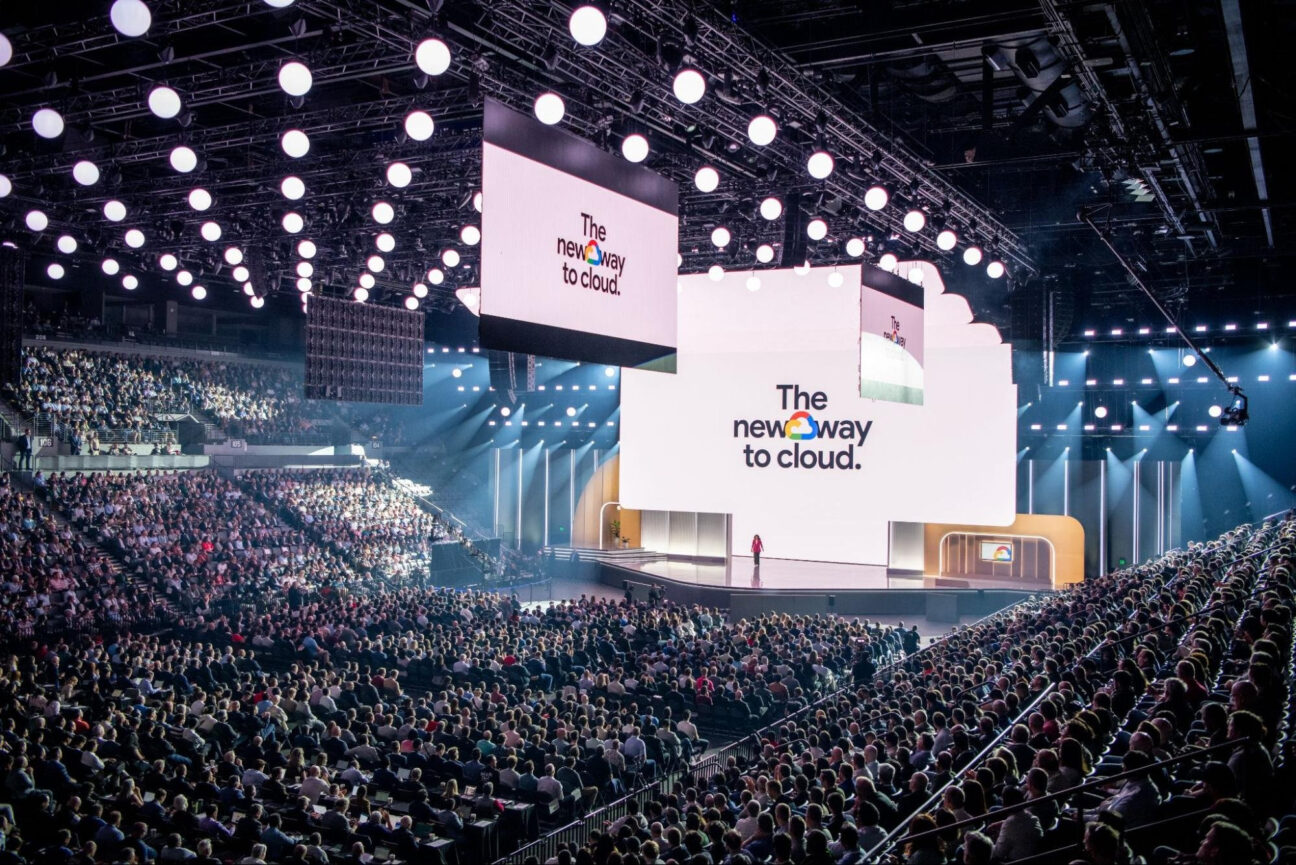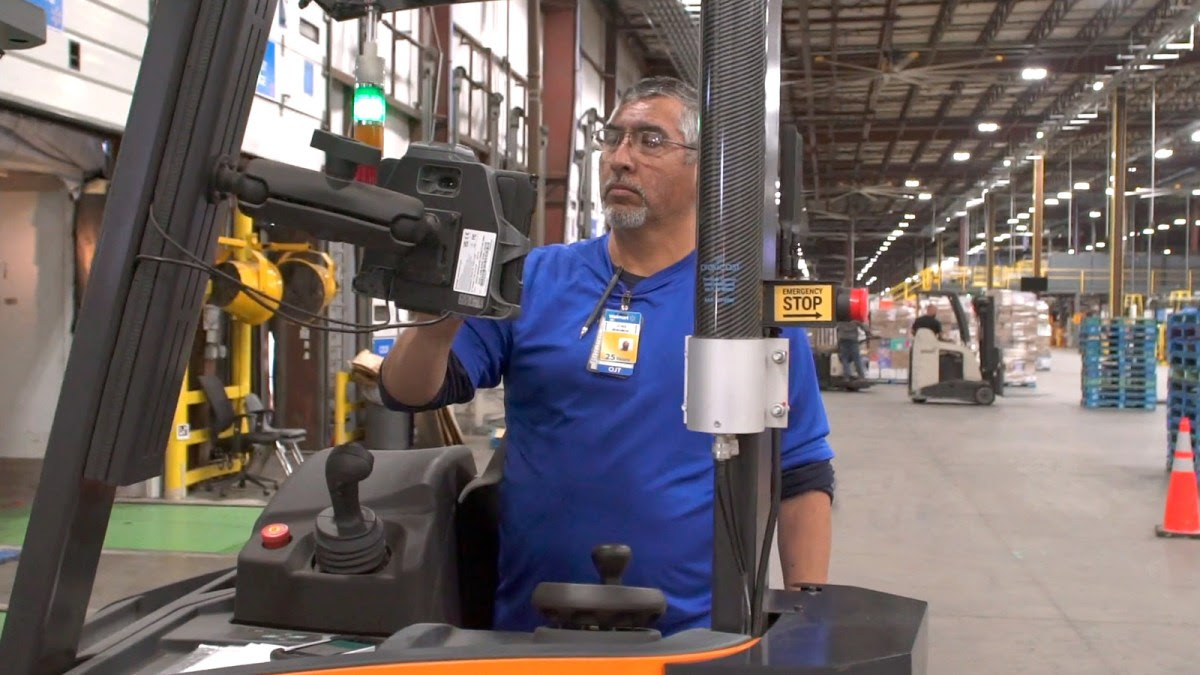Version 37.0

Written & Compiled by Macklin Andrick, GPJ Sr. Creative Technologist
GPJ’s Experience Technology practice is your trusted guide through the latest technological shifts and how they might benefit your next experience. Welcome to your latest scoop of Creative Tech Bytes!
Dive into the world of melody with Udio, the new AI music wizard weaving beats from mere words. Google dazzles at Cloud Next ’24, unveiling AI marvels that promise to revolutionize everything from your shopping cart to your code lines. Meanwhile, WrestleMania 40 goes high-tech with AR, bringing digital dazzle right into the ring. Stay tuned, tech aficionados, we’re just getting started!

New AI music generator Udio synthesizes realistic music on demand
The newly launched Udio, developed by former DeepMind employees, introduces an advanced AI music-synthesis service capable of generating high-fidelity musical audio from text prompts. Although Udio impresses with its ability to produce diverse musical genres from country to hip hop, it’s still in its beta phase and struggles to consistently deliver quality results without significant human intervention. Experimentation with Udio revealed that its initial outputs often require further refinement and selection from multiple attempts to achieve desirable quality. Despite the technical achievements, the introduction of such AI-driven music creation tools has sparked concern among musicians, fearing the implications for the future of human-made art and creativity.
Day 1 & 2 Next ’24 recap
The first two days of Google Cloud Next ’24 in Las Vegas highlighted significant advancements and applications of AI. On day one, Sundar Pichai and other executives showcased how generative AI is transforming industries like finance and retail with insights from major companies such as Goldman Sachs and Walmart, introducing new products like the Gemini suite and enhancements in Google Cloud’s infrastructure including Google Axion and AI Hypercomputer systems. They stressed the importance of reliable data for AI development, enhancing Google’s database technologies and BigQuery. Day two focused on the capabilities of AI agents with hands-on demonstrations by Richard Seroter and team, emphasizing the ease of building, operating, and managing advanced applications through Gemini across various services. New tools and solutions were announced for improving AI application development on platforms like GKE and Cloud Run, and enhancements in natural language processing and API management were highlighted, rounding out a robust schedule of sessions and setting a high bar for future developments.


WWE went big on AR at WrestleMania 40
WWE leveraged augmented reality (AR) technology extensively during WrestleMania 40, enhancing the event’s visual spectacle and marking another step in the company’s evolving production techniques. As part of its transition into a post-Vince McMahon era, under the new ownership of Endeavor, this year’s WrestleMania featured innovative AR effects like beacon AR technology, which allowed performers to interact with AR elements during their entrances. The use of six specialized cameras among a total of thirty enabled dynamic AR displays, enhancing the broadcast for viewers at home while maintaining the traditional live spectacle for the audience in the stadium. This integration of AR is part of WWE’s broader strategy to innovate and improve its television presentation, distinguishing its programming in the competitive sports entertainment landscape.
Rooms, a 3D design app and ‘cozy game,’ gets a major update as users jump to 250K
Rooms, a 3D design app that blends gaming with interior decorating, has rolled out a significant update today, enhancing its discovery features and user experience. Originally launched five months ago by ex-Google employees, Rooms has rapidly grown to 250,000 users, up from 40,000 at its debut. The update introduces a Trending feed, an Explore page, and a “Honeycomb View” for browsing, aiming to improve visibility for creators and facilitate community interaction. The app also supports customization through coding with Lua, and the new version promises faster rendering with mesh optimization. While the iOS app sees the bulk of updates, enhancements are also shared with its web version, and plans for a Steam desktop app and potential AI coding tools are on the horizon, signaling Rooms’ ambitious expansion in the digital creativity space.


Apple Introduces MobileCLIP, a State-of-the-Art Image-Text Model for Mobile Devices
Apple has announced MobileCLIP, a groundbreaking image-text model tailored for mobile devices, marking a significant advancement in on-device AI. This new family of models utilizes a hybrid CNN-transformer architecture, making them smaller and faster than their predecessors, and capable of operating directly on devices such as iPhones without needing cloud processing. The innovation extends to a multi-modal reinforced training method that significantly enhances learning efficiency through knowledge transfer from both a pre-trained image captioning model and an ensemble of CLIP models. This approach allows MobileCLIP to achieve impressive zero-shot performance metrics, competing well against larger models but with drastically reduced size and latency. Apple’s MobileCLIP is not only a technical leap forward but also promises to enhance consumer devices with smarter, real-time AI features that respect user privacy and work seamlessly offline, suggesting a shift towards more powerful, autonomous device-based AI applications in the near future.
Walmart will deploy robotic forklifts in its distribution centers
Walmart is escalating its investment in warehouse automation by deploying robotic forklifts, developed in partnership with Fox Robotics, to enhance efficiency and safety in its distribution centers. This initiative follows a 16-month pilot at its Florida-based high-tech Distribution Center 6020, which also experimented with Symbotic’s package sortation and retrieval technologies. The rollout will initially target four high-tech distribution centers, with potential expansion if the deployment proves successful. These robotic forklifts represent a strategic move by Walmart to retrofit existing facilities with advanced technologies, aiming to keep pace with competitors like Amazon and to reduce workplace accidents associated with manual forklift operations.

More Cool Stuff We Found
- Dyson’s AR app shows you where you’ve vacuumed
- Google Launches Android Find My Device Network
- Microsoft is working on sound recognition AI technologies capable of detecting natural disasters
- Google brings AI-powered editing tools, like Magic Editor, to all Google Photos users for free
- OpenAI makes GPT-4 Turbo with Vision available to developers to unlock new AI apps
- Immersive Experience Design: Expert Insights and Techniques
- Perth’s Cathedral Square Reimagined Into a Playful, Interactive Installation
- Exploring the Core Principles of Sensory Design in Architecture
Missed a Creative Tech Byte? Find all previous versions here.